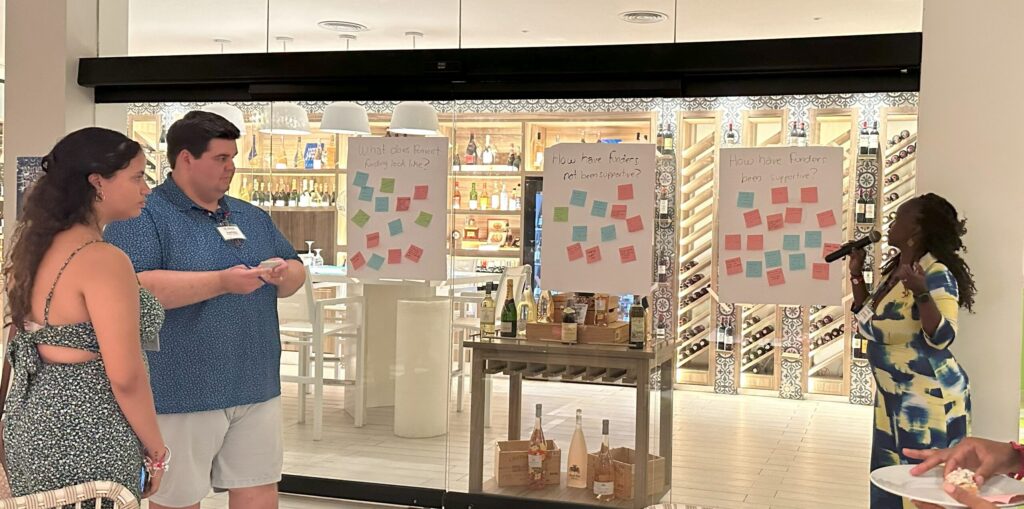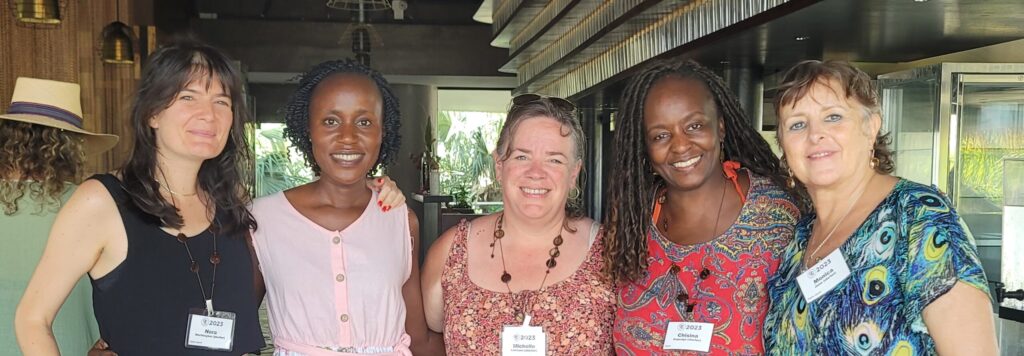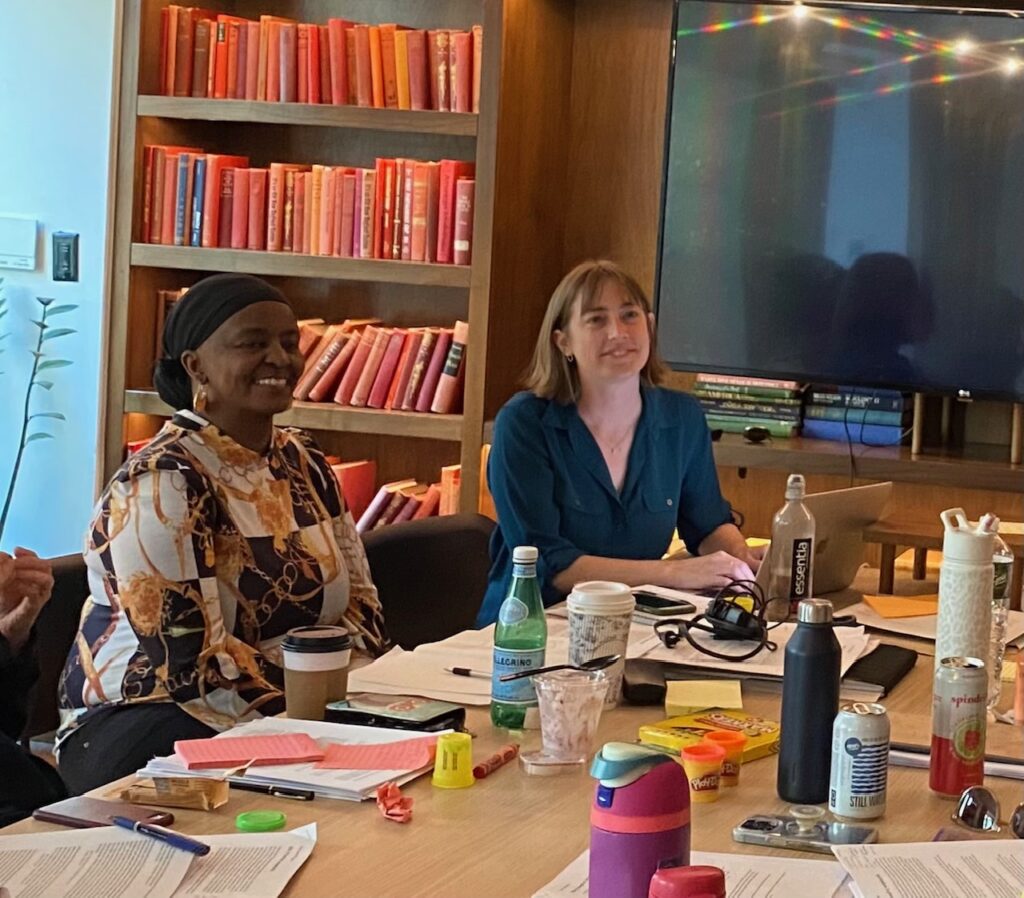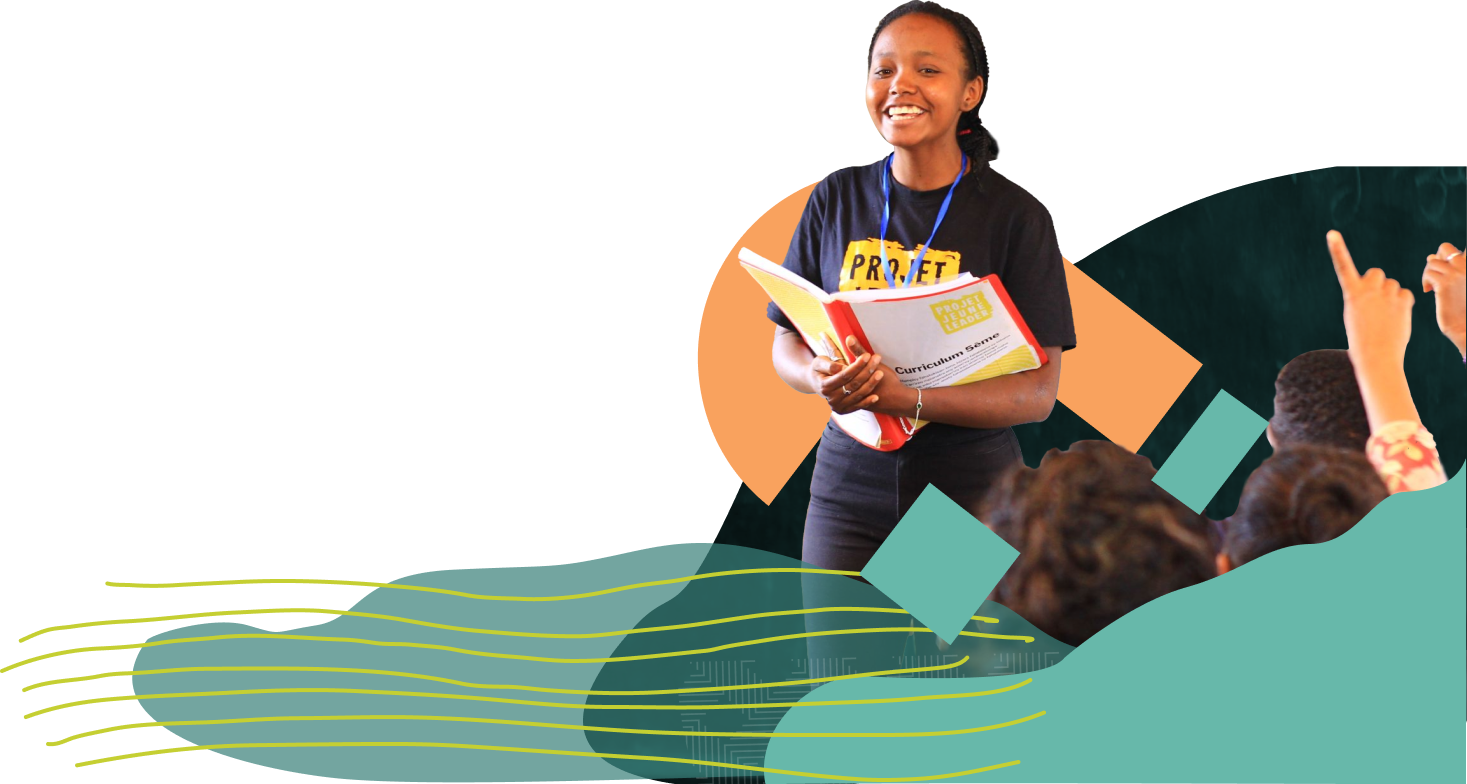The Way Forward: Game-Changing Shifts in Funding Power Dynamics

In the evolving landscape of the non-profit sector’s role in international development, what could meaningful shifts in the power dynamics between practitioners and donors look like? Can we create collective guiding principles to help women-led organizations advance their work more effectively while redressing the balance of power? These are the questions WomenStrong International and partners, Monica Jasis from Centro Mujeres, A.C. (Mexico), Monica Nyiraguhabwa from Girl Up Initiative Uganda, and Nora Worthington of Women’s Justice Initiative (Guatemala) set out to explore with both funders and implementers at Opportunity Collaboration 2023 (OC23), an in-person unconference for global impact leaders to foster global community, personal growth, and solutions to address poverty.
What’s Working – What’s Not
In the true spirit of Opportunity Collaboration, we decided that spending an evening exploring power dynamics through play was the way to go. Amidst laughter, as teams attempted to build, and rebuild their Jenga® towers crumbling in rapidly changing conditions, we explored what is, and isn’t, working regarding donor/implementer relationships.
Participants from attending non-profits enthusiastically shared (through conversation and on flip charts) how funders have been supportive in many ways, including offering unrestricted or flexible funding for whatever is most needed and giving multi-year awards that allow for longer-term planning and sustainability. Others cited investments in infrastructure, capacity strengthening, staff development (including salaries and benefits), and shifts toward more learning and less traditional monitoring and evaluation. At the heart of these positive experiences was a shared sense of trust and genuine listening, between non-profits and their funders.

Unfortunately, according to our session participants, some funders have fallen short in their support, often adopting top-down impact frameworks that may not align with the real needs of the organizations they fund. There’s a disconnect when requirements are based on what donors “think” is needed, rather than on a genuine understanding of the on-the-ground situation. Stringent reporting requirements further strain organizations, diverting resources from their core missions.
Forging a Path Toward Greater Impact
In the quest for positive change in the communities where they work, both non-profit organizations and donors can up their game with some shifts in how they work together. While our sessions yielded a long list of ideas from both sides of the table, we suggest four principles that we think could be game-changing:
Embrace supportive funding. Donors should work to remove as many barriers as possible to funding to make it more accessible and more impactful, including making funding unrestricted, offering multi-year awards, reducing reporting requirements (or working WITH grantees to determine how to shift reporting requirements to work with their own monitoring and evaluation needs, while still helping their donors understand the impacts of their funding), and funding the nontraditional things like capacity strengthening, staff salaries and benefits, and infrastructure.
Recognize and wield power responsibly. Both non-profit organizations and donors have power! Donors who acknowledge this power dynamic with grantees, and recognize the power their knowledge and networks bring, help to bring power into balance. Open conversations about where values are aligned and where they are not are also critical, and grantees should conduct due diligence on donors and be willing to walk away from partnerships that are not a fit. When non-profit organizations cultivate an abundance mindset, this can empower them to create, cultivate, and transform their relationships with donors.
Define success collaboratively. Donors and grantees all desire success but often don’t take the time to understand what success looks like for each party. Key performance indicators defined by donors may not speak to programmatic outcomes. Grantees and donors can engage in dialogue about what should be measured and the impact desired at the community level. It’s not easy to engage in these discussions, but grantees need to be assertive and courageous, while donors need to listen and open up space to deepen the conversation.
Build trusting, two-way relationships. Trusting relationships between funders and grantees are the cornerstone for fostering collaboration, transparency, and long-term impact. Taking the time to establish trust creates an environment where open communication and shared goals can thrive – and where both parties feel empowered to honestly communicate challenges, successes, and evolving needs, allowing for mutual learning, adaptation, and ultimately, for more significant impact. Over time, these trusting two-way relationships can become powerful collaborations where each other’s expertise, insights, and experiences are fully leveraged.
At WomenStrong International, we have taken what we have learned along the way and have adopted new practices by providing unrestricted funding, reducing reporting requirements, and by tailoring a Learning Lab to partner interests. All of these steps are helping us balance uneven power dynamics and foster a community of trust. Are we there yet? We’re certain we have more work to do, but we’re definitely making progress – and we’re excited by the solidarity, mutual empowerment, innovation, and effectiveness we’re seeing along the way. Will you join us on this journey?





